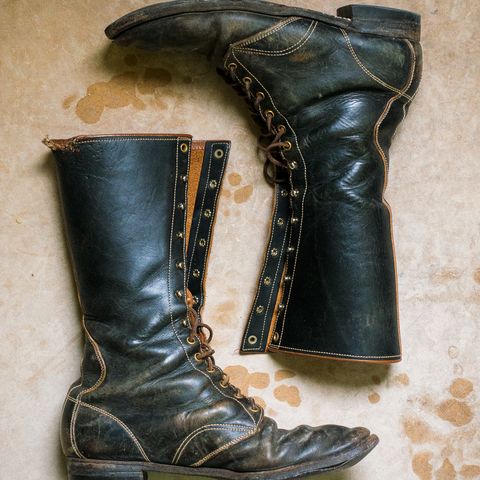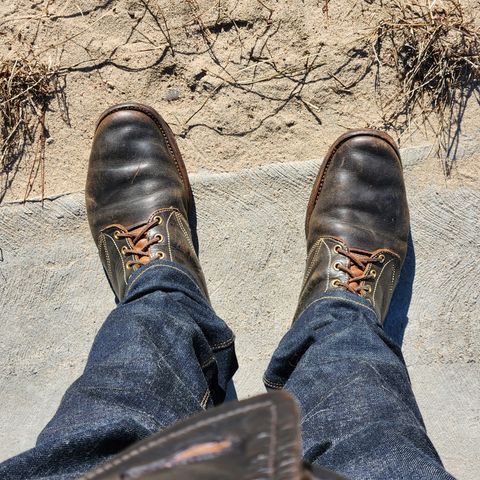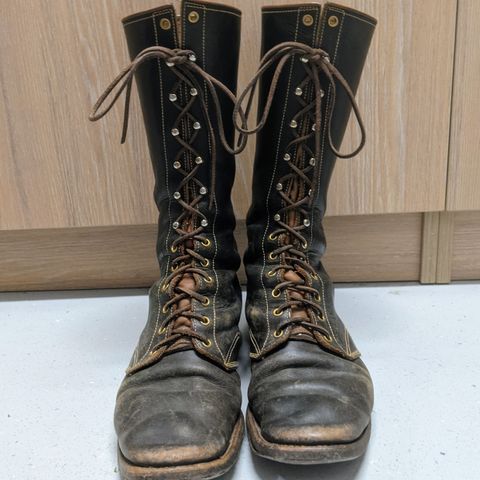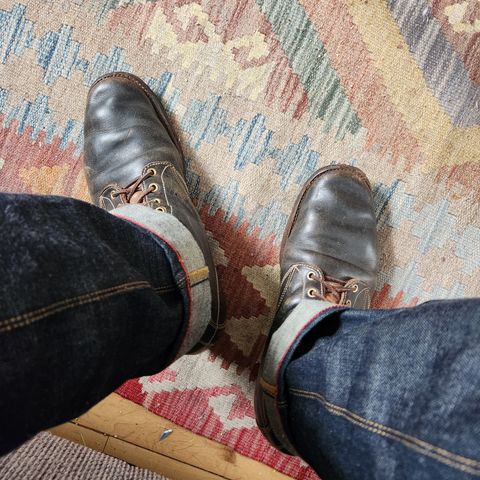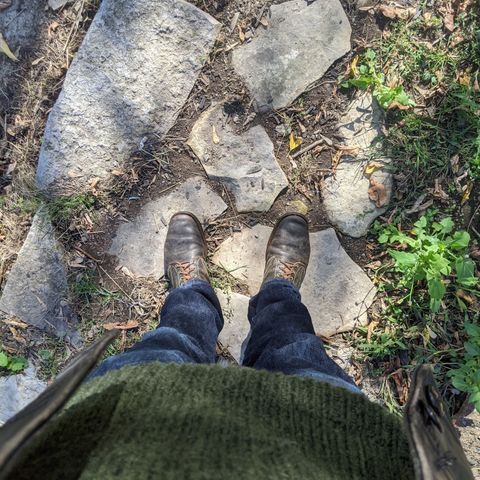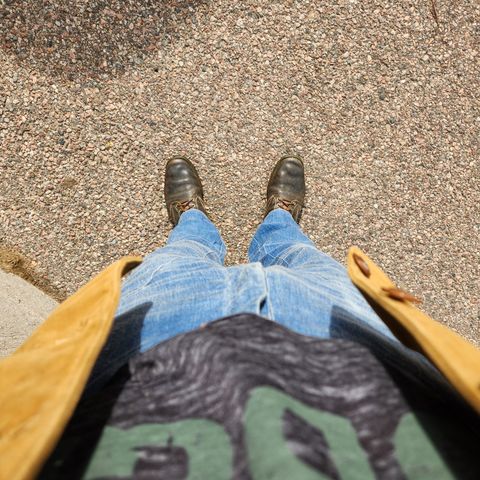Wickett & Craig Black-Overdyed Latigo
Leather Color • exclusive for ClinchAbout
Clinch - Wickett & Craig Black-Overdyed Latigo is a leather treatment applied to H Latigo base leather from Wickett & Craig. The leather undergoes overdyeing to create a black surface finish over the vegetable-tanned brown base, producing a teacore effect where the black finish wears away through use to reveal the underlying brown leather. This treatment is used by Clinch on select boot models.
About
Clinch - Wickett & Craig Black-Overdyed Latigo is a leather treatment applied to H Latigo base leather from Wickett & Craig. The leather undergoes overdyeing to create a black surface finish over the vegetable-tanned brown base, producing a teacore effect where the black finish wears away through use to reveal the underlying brown leather. This treatment is used by Clinch on select boot models.
The overdying process deposits black dye primarily on the leather's surface while the core retains its natural brown color from vegetable tanning. As boots made from this leather flex and wear against surfaces, the outer layer gradually abrades, exposing progressively more of the brown base leather in high-contact areas such as the vamp creases and heel counters.
Base Leather Properties
The foundation of Black-Overdyed Latigo is H Latigo, a hybrid leather developed by Wickett & Craig that combines characteristics of Traditional Harness and English Bridle leathers. The leather features the smooth hand of English Bridle with the substantial cut typical of Traditional Harness, creating a less sensitive grain surface than either parent leather type alone. Wickett & Craig finishes H Latigo using their time-tested English Bridle technique.
The leather undergoes a six-week vegetable tanning process at Wickett & Craig's Pennsylvania facility. Hides from North American cattle of European stock are soaked in 72 vats containing natural tannins extracted from Mimosa and Quebracho tree bark. This two-week soaking period is followed by drum dyeing and fat liquoring with conditioning oils and waxes. The tannery then hot stuffs the leather with proprietary blends of waxes, oils, and tallows before a three-day air drying period in climate-controlled space.
Physical Characteristics
Black-Overdyed Latigo presents as thick, substantial leather with weight characteristic of H Latigo stock. The vegetable tanning process creates a dense fiber structure that resists tearing and maintains shape under stress. The leather retains oils from Wickett & Craig's fat liquoring process, which contributes to suppleness and supports patina development as the brown base leather becomes exposed through wear.
The overdyed surface provides a protective black finish during early wear stages. As this surface layer abrades through flexing and contact, the vegetable-tanned base leather underneath continues providing structural integrity while developing patina. The brown base leather darkens and gains depth through exposure to oils and handling, creating increasing contrast between protected black areas and worn brown sections.
Aging and Patina Development
The teacore construction creates distinctive aging patterns. The leather starts with a uniform black appearance that develops brown undertones through regular wear. High-contact areas show color evolution first, with the vamp creases, heel counters, and toe caps transitioning from black to brown as the surface dye layer wears away. The vegetable-tanned base contributes rich patina development beyond simple color change, with the exposed brown leather darkening over time.
The rate and pattern of wear varies based on boot use and environment, creating unique appearance development for each pair. Areas subject to frequent flexing and abrasion transition more quickly from black to brown, while protected sections maintain the black finish longer, producing natural contrast patterns.
References
"H Latigo". Wickett-Craig. Retrieved October 11, 2025.
"Vegetable Tanning". Wickett-Craig. Retrieved October 11, 2025.
